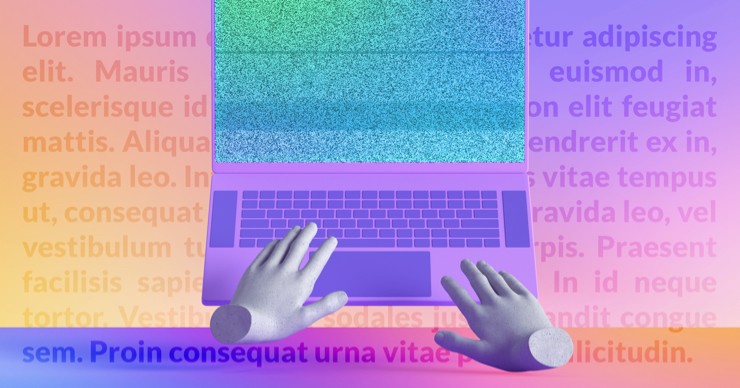Why We Don’t Use Dummy Content While Designing?

It’s a designer’s job to create a visually appealing design that communicates the right brand message/ tone. Read that again, Content is at the core & rightly said by experts: Content is King. Filler content is like a missile that will sink the research and product development ship sooner or later.
Hence, we stay away from using dummy text and here’s why:
- Lorem Ipsum can murder User Experience
Assume a user requires an important document copy to be submitted on level 3 of a form. Only if you knew the context to the field of the form, would you alert the user about it before he/she begins the submission process. The inefficiency of doing so will leave you with a low conversion rate.
That’s why designing with Lorem Ipsum is like designing with loose context and it takes away the opportunity to evolve content through the process. When you actually include real content (not final, just real is fine) from stage one, it gives you a window to scrutinize every piece of information appearing within a flow; you end up questioning what’s being communicated? And why? What tone of voice is the brand coming across as?
The analysis lets you pin the apt tone and communication as the design is still strengthening.
- Design is as powerful as the content it projects
Being mindful of the content from the start makes you accountable for where the information is being fetched from the system. Ask these questions:
- At what point of the user journey should we be pushing a certain content piece?
- Are certain parts adding value to the user experience or they are simply creating overlaps?
- Does the content need edits? If yes, who is going to edit it?
The questioning can go on until we find reasoning, just like a design interface process. Aim to get into the depths of each element to ensure there are no open loops and project flows get logical conclusions.
- Leads to Communication Gap within the team
Placeholders are surely tempting with their convenience. But they can actually cause a lot of confusion within the product team, where each member assumes the type of content that will get filled in the placeholders. In UX UI, assumptions can be catastrophic. When the product gets to the development phase, the team wouldn’t understand the real importance of sections & randomly would add content as per their own understanding of the user.
In the end, if testing and reviewing isn’t thoroughly conducted, it can reverse the efforts of a UX Architect (who gathers brand requirements) & a UX Researcher (who defines the user & their requirements)
- Breaks in Layout leave’s everyone fixing the design at the end
With placeholders, it gets difficult to estimate the length of the actual content, hence the layout is created with the desired length of dummy text (what suits the design) rather than dynamic data sets in mind. Eventually, when the actual content gets implemented, the output is nothing like the first phase design screens.
This lack of mindfulness can drag the efforts all departments rock bottom and can sometimes lead to last minute shabby work & fixes (at times, Lorem Ipsum gets greeted at user interactions too)
Takeaway:
(if you are a Designer) Product ownership is key, COZ when a dummy text design goes LIVE because of negligence, it equally looks bad on your job profile.
(if you are a client) Remember to be cautious of content details, they make a world of a difference to your user. Now that’s our 6 years of experience talking.

-
Designcoz
UI/UX Design Partner
We are a process-driven agency based out of India building impactful Digital products for ambitious companies from around the world. Chaos is our raw material & problem solving is in our DNA.



0 Comments